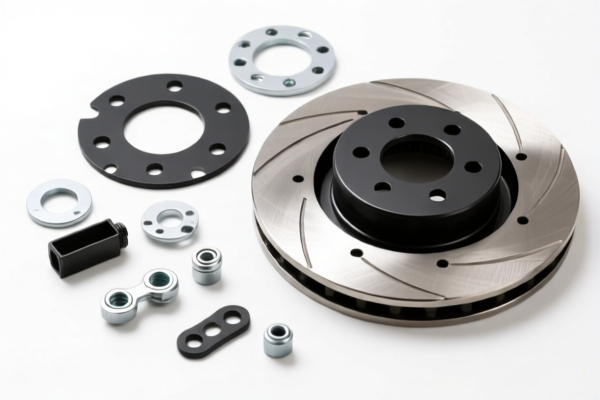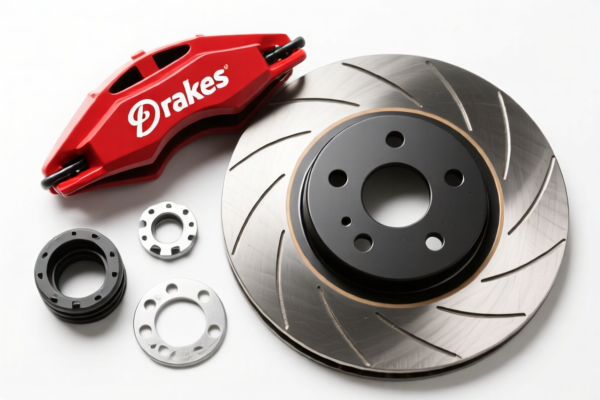| HS Code | Official Doc | Tariff Rate | Origin | Destination | Effective Date |
|---|---|---|---|---|---|
| 8487900080 | Doc | 83.9% | CN | US | 2025-05-12 |
| 8487900040 | Doc | 58.9% | CN | US | 2025-05-12 |
| 8505200000 | Doc | 58.1% | CN | US | 2025-05-12 |
| 8505907000 | Doc | 55.0% | CN | US | 2025-05-12 |
| 4016996010 | Doc | 57.5% | CN | US | 2025-05-12 |
| 4016993000 | Doc | 55.0% | CN | US | 2025-05-12 |
| 4008192000 | Doc | 55.0% | CN | US | 2025-05-12 |
| 4008194000 | Doc | 55.0% | CN | US | 2025-05-12 |




Brake Accessories
Brake accessories encompass a wide range of components used in conjunction with the primary braking system of vehicles to ensure optimal performance, safety, and longevity. They are essential for maintaining stopping power and controlling vehicle deceleration.
Materials
The materials used in brake accessories vary depending on the specific component and its function. Common materials include:
- Steel: Used extensively in brake lines, rotors (in some cases), and backing plates due to its strength and durability.
- Iron: Historically used for rotors, though increasingly replaced by steel or carbon ceramic.
- Carbon Ceramic: High-performance rotors offering exceptional heat resistance and reduced weight, commonly found in racing and high-end vehicles.
- Rubber: Used in brake hoses for flexibility and resistance to fluid pressure.
- Synthetic Rubber/Fluoropolymers: Used in high-performance hoses for increased temperature and chemical resistance.
- Copper/Brass: Often found in brake fittings and connectors.
- Friction Materials (Organic, Semi-Metallic, Ceramic): Used in brake pads and shoes to generate friction.
- Aluminum Alloys: Used for calipers (to reduce weight) and some fittings.
Purpose
The primary purposes of brake accessories are:
- Enhance Braking Performance: Improve stopping power, responsiveness, and consistency.
- Increase Safety: Ensure reliable braking in various conditions.
- Extend Brake System Life: Protect primary components from wear and tear.
- Prevent System Failure: Reduce the risk of brake failure due to component degradation.
- Improve Modulation: Allow for precise control of braking force.
Function
Different accessories perform specific functions within the braking system:
- Brake Pads: Create friction against the rotors to slow or stop the vehicle.
- Brake Rotors/Discs: Provide a surface for the pads to grip, dissipating heat generated during braking.
- Brake Shoes: Used in drum brake systems, pressing against the drum to create friction.
- Brake Lines: Transmit hydraulic pressure from the master cylinder to the calipers/wheel cylinders.
- Brake Hoses: Flexible lines connecting the brake lines to the calipers/wheel cylinders, allowing for suspension movement.
- Brake Calipers: House the brake pads and apply clamping force to the rotors.
- Wheel Cylinders: In drum brake systems, convert hydraulic pressure into mechanical force to push the brake shoes against the drum.
- Brake Fittings/Connectors: Join brake lines and hoses securely, preventing leaks.
- Brake Proportioning Valves: Regulate hydraulic pressure to the rear brakes, preventing wheel lockup.
- Brake Boosters: Amplify the force applied to the master cylinder, reducing driver effort.
- Parking Brake Cables: Activate the parking brake mechanism, holding the vehicle stationary.
Usage Scenarios
Brake accessories are used in a wide range of scenarios:
- Regular Maintenance: Replacing worn pads, shoes, rotors, and hoses.
- Performance Upgrades: Installing high-performance pads, rotors, and calipers for improved stopping power.
- Racing: Utilizing specialized brake components for extreme heat resistance and consistent performance.
- Off-Roading: Employing heavy-duty components for durability and reliability in challenging terrain.
- Vehicle Restoration: Replacing original components to restore braking performance.
- Emergency Repairs: Replacing damaged components due to leaks or failures.
Common Types
- Brake Pad Types: Organic, Semi-Metallic, Ceramic, Carbon Fiber.
- Rotor Types: Solid, Slotted, Drilled, Slotted & Drilled, Carbon Ceramic.
- Caliper Types: Floating, Fixed, Opposed-Piston.
- Brake Line Types: Rubber, Steel-Braided, PTFE (Teflon) Lined.
- Brake Hose Types: Rubber, Steel-Braided, High-Temperature Rubber.
- Master Cylinder Types: Single-Stage, Dual-Stage, Tandem.
- Brake Booster Types: Vacuum, Hydro-Boost.
- Parking Brake Types: Cable-Operated, Electronic.
Brake accessories encompass components used in braking systems, typically found in motor vehicles. These parts are designed to control the speed or stop a vehicle.
The following HS codes are relevant based on the provided information:
- 4016996010: Other articles of vulcanized rubber other than hard rubber: Other: Other: Other: Mechanical articles for motor vehicles. This code covers mechanical articles made of vulcanized rubber, specifically for use in motor vehicles.
- 4016993000: Other articles of vulcanized rubber other than hard rubber: Other: Other: Other: Of natural rubber: Vibration control goods of a kind used in the vehicles of headings 8701 through 8705. This code applies to vibration control goods made of natural rubber, intended for vehicles classified under headings 8701 to 8705.
- 8487900080: Machinery parts, not containing electrical connectors, insulators, coils, contacts or other electrical features, and not specified or included elsewhere in this chapter: Other Other. This code covers non-electrical machinery parts, which could include certain brake components not containing electrical elements.
HS Code Breakdown:
- 40: Rubber and articles thereof. This chapter generally covers products made from natural or synthetic rubber.
- 16: Vulcanized rubber other than hard rubber. This heading specifies rubber that has been chemically altered to improve its strength and elasticity.
- 99: Other. This subheading indicates a more specific categorization within the broader rubber articles category.
- 60: Mechanical articles for motor vehicles. This further defines the rubber articles as being used in motor vehicles.
- 84: Nuclear reactors, boilers, machinery and mechanical appliances; parts thereof. This chapter covers a wide range of machinery and mechanical appliances.
- 87: Vehicles other than railway or tramway rolling-stock, and parts and accessories thereof. This chapter covers vehicles and their associated parts.
- 90: Optical, precision, medical, surgical, photographic, cinematographic, measuring, checking, precision, medical or surgical instruments and apparatus; parts and accessories thereof. This chapter covers a wide range of instruments and apparatus.
Important Note:
Regarding HS code 4016993000, the reference material specifies that these are vibration control goods. If the brake accessories do not function as vibration control components, this HS code may not be applicable.
Customer Reviews
No reviews yet.